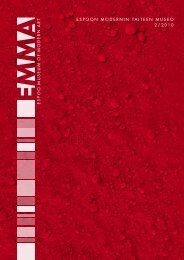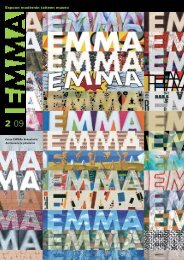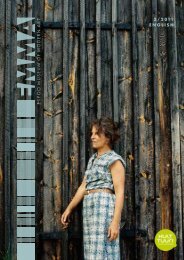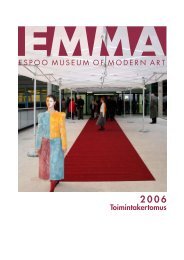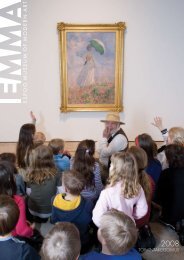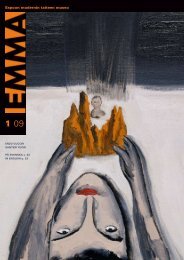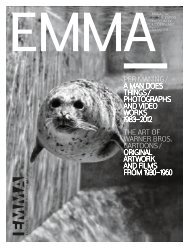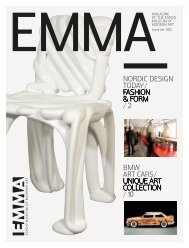Magazine 2/2010 - Emma
Magazine 2/2010 - Emma
Magazine 2/2010 - Emma
- No tags were found...
You also want an ePaper? Increase the reach of your titles
YUMPU automatically turns print PDFs into web optimized ePapers that Google loves.
ists. The works in which I use these titles aresimultaneously both question and proposition.How do you think aboutcolour and colour theory?CE: If you mean the ”colour theories” used inart schools and intended to be applied to practicalworking, their structure is not based onany theory, neither are they abstract in character,but based to a large extent on seeing,observation.This could be called the empirical method ofseeing colours as artistic tools. Hence teaching,not theory. Colour theories come from theworld of physics.You mention two traditions ofcolour theory. What are they?CE: To my mind the first is the so-called analyticalmethod based on the observations ofNewton and Chevreul concerning the relationshipbetween light and colour. This was furtherdeveloped by the Neo-Impressionists whodivided light into coloured segments (divisionism),bringing about an optical colour mixturein the eye. This meant that colour was used torecreate light.The second theory stems from Romanticismand Goethe, which attempts to create coloursvia observation. Josef Albers’s view is a systematicdevelopment of this.What is your theory of colour?CE: My view is based on the colours of myimagination. The colours that take shape inme, ie, the colours that become independentvalues without observable models.PK: You have been teaching at the FreeArt School for a long time now. What has thismeant to you most?CE: The school and its pedagogical content.For me it has meant not only excellent teachingmethods but a kind of all-round university educationin art history with a special emphasison modern painting, yet not forgetting classicalpainting. In addition the school has functionedas a creative forum on issues relating to thearts.In the 1970s, the Free Art School was thefirst art school to organise long-term colourteaching. This was based on Josef Albers’sideas. The courses were attended by peoplefrom outside the school and from other artschools. The School published a translation ofAlbers’s book so other schools could arrangecourses on the subject. Colour theory coursesare no longer compulsory or play a central rolein teaching. Goethe’s theory of colour, however,is still taught at the School.




